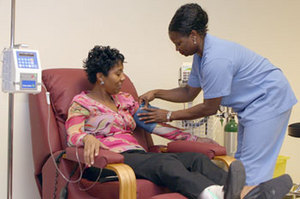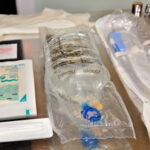Most people do not know of my CVID illness. I developed a lazy habit of simply attributing most health nuisances to Lyme disease – to avoid the glazed, puzzled, or bored look in people’s eyes.
Apparently in our post-AIDS world, the phrase “immune deficiency” is the problem.
Whether it instills mild terror or the word ‘immune’ confounds the mind, thirteen years later I still don’t know.
Though if I’m being particularly evil, I tell someone I have “hypogammaglobulinemia,” a broader name for this immune deficiency disease. This is a particularly useful tactic to prematurely end a poorly directed conversation.
Otherwise, the limitations imposed by CVID can not always be hidden and now I’ve finally decided to come clean.
[For a more academic explanation of what common variable immune deficiency is, and how it’s diagnosed and treated, refer to the following article:”Common Variable Immune Deficiency: Symptoms, Diagnosis and Treatment.” ]
The following, unlike the aforementioned article, is more of an inside glimpse into daily life with CVID, and ultimately about coping with this immune deficiency disease.
CVID, Shopping and Parenting – Life’s Challenges
Common Variable Immune Deficiency (CVID) is simple in essence: it involves a weakened immune system (deficient antibodies) and germs provide additional challenges than they would otherwise.
Trips to the grocery story, for instance, are a calculated risk, especially now living in the city. Yet, I am not nearly as germophobic as I was when first diagnosed with CVID. Then, most every public door was opened with paper towel in hand, and I avoided many outings. That was mostly unnecessary.
It’s not as if patients catch anything and everything, but risk of infections is real. Subsequently, a healthy, or unhealthy, amount of fear accompanies the disease.
Exposure to crowds, or even large family gatherings, with someone always a carrier, is a biggie.
Following attendance of such, in my case, mild flu-like symptoms may occur for a day or two. About 10-20 percent of the time, sinus and upper respiratory symptoms exacerbate – those trips are more regrettable, but I refuse to live in a bubble.
Thankfully, I’m not the social butterfly I aspired to be in my teens; my style would be seriously crimped. As they say, sometimes you get what you need, but not always want.
Parenting too accumulates challenges. Note that I love children, especially the one I largely raised, though the little germ-incubators can pose a bit of problem for CVID patients. What starts as a child’s runny nose is ultimate bronchitis for some CVID parents.
Another parenting challenge is to ensure that the child, whose world is full of carefree play and its accompanying microbes, takes no blame for any CVID exacerbations. Honest discussion is required, rather than illusion. They can come to blame the germs rather than themselves.
It Could Be Worse
Much more serious infections like pneumonia can occur in CVID, but I’ve been rather lucky in that department. Those antibodies appear to have shown up for work.
Fatigue has been my worst enemy. On bad days, thinking too hard equates with the effort of high-impact aerobics.
Though stomach trouble, shortness of breath and joint or muscle pain come and go. Mostly, besides eliminating fatigue, I’d just like to be able to breathe through my nose and better with my lungs.
Many CVID patients travel a much bumpier road than I, with surgery, autoimmune illness or eventually cancer. Then again, I’m breaking my rule below about comparisons and minimization. Ok, yes the disease really _________ (slang for objectionable), sometimes, but life goes on and it’s mostly pretty good.
CVID Treatment Concerns – Am I Worth $3000 a Month?
Further, I relate to new CVID patients in that I went off of gamma globulin (IVIG) treatment for a few years (not wise) and now relive the process of convincing the insurance company my life is worth three or so thousand dollars a month.
It’s probably not insofar as the insurance company is concerned. Thankfully, there are laws to abide by and, more importantly, medical charges would result with CVID complications they may wish to avoid.
Isn’t it sad our lives are evaluated on a spreadsheet?
Currently, I’m waiting on test results and that is a bit un-nerving. When you’re finally diagnosed with CVID, you are anxious to get the treatment ball rolling – to feel better – but it takes time.
Then, when you get what you want, approval for the treatment called intravenous gamma globulin (IVIG), the trepidation increases again.
In short, IVIG is a blood product infused in a vein over a few hours, one to two times a month. The treatment replaces some of the missing antibodies, but not all of them. When I began CVID treatment in 1994 some IVIG lots, none that I took, were contaminated with Hepatitis C — not a reassuring start.
IVIG safety has improved. Yet, as IVIG activates the immune system, is a natural rather than synthetic product, you never really know how you will react to any given treatment.
With a rocky start, and a frightful trip to the E.R., I learned which IVIG products work, how fast they should be infused, and which medicines minimize side-effects. This may be a bit of trial-and-error at the beginning but treatment pitfals typically improve; side-effects may then be limited to a temporary flu-like feeling, sometimes backache.
Concerning CVID, the best advice I can give is to fire any infusion nurse that doesn’t appear on top of things, or worse is disinterested. Inadequate home nurses and no benefit of a physician nearby poses problems. Besides, a poor nurse makes poor company.
Conversely, a good infusion nurse is more valuable than 24K gold to a CVID patient.
Light at the End of the Tunnel
After all this, and as the immune system regulates and deep-seated infections relent, you begin to feel better.
Then there is always antibiotic treatments to look forward to, but the need decreases with IVIG treatments.
So ultimately, CVID is like any other chronic condition, from high-blood pressure to diabetes.
CVID can be well managed, life can be semi-normal, and both good days and bad occur. Some CVID patients have mild disease and some much more serious forms. The main difference with CVID and more common chronic illness is losing your audience when discussing it.
Some Tips for Living with Common Variable Immune Deficiency
While patients share several commonalities, the disease is different for each individual. These tips prove useful overall:
— Minimize exposure to germs and take reasonable precautions to exposure (hand washing, avoidance etc.) Areas of concern include crowds, hospitals and gatherings around people who have colds, flu etc.
— Avoid diagnostic and treatment delays when infection is suspected and investigate symptomatic relief.
— Practice good overall health care: diet, exercise, stress-reduction, and proper sleep.
— Be realistic about limitations, whether few or many.
— If energy levels fluctuate, schedule more demanding tasks, if possible, in the days following IVIG treatment rather than near the treatment due date.
— Accommodate the body’s need for rest.
— Don’t squelch fears about CVID complications but avoid dwelling on negative possibilities. Obtain support through health care professionals and support groups until fears are manageable and realistic.
— Explain good hygeinic practices to friends and loved-ones that will promote your health, and ask them to let you know when they feel under the weather.
— Avoid comparing yourself to others. Suffering is no less real for those with less serious forms of CVID.
Disclaimer: This information is for information purposes only and is not a substitute for qualified medical advice.




